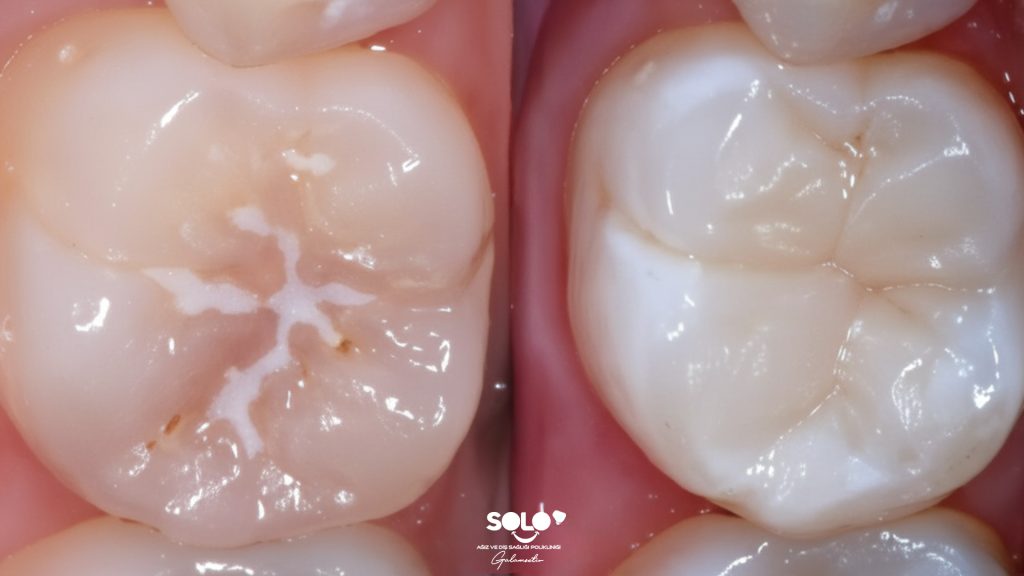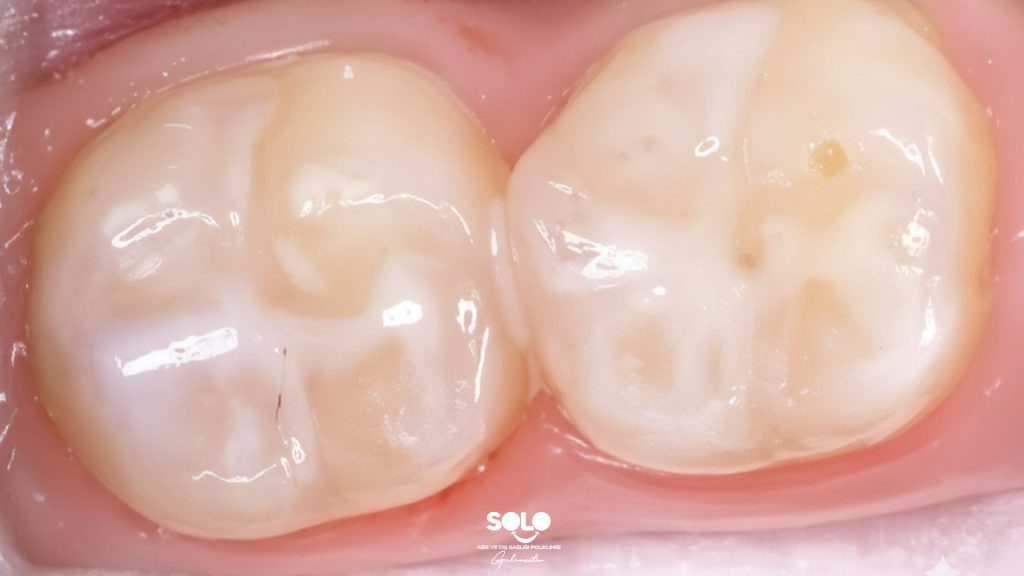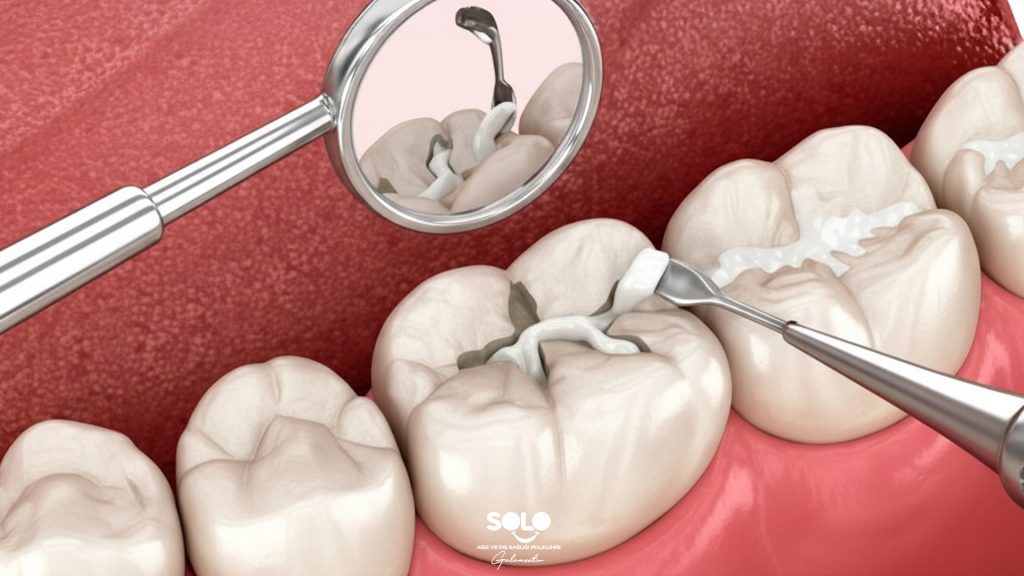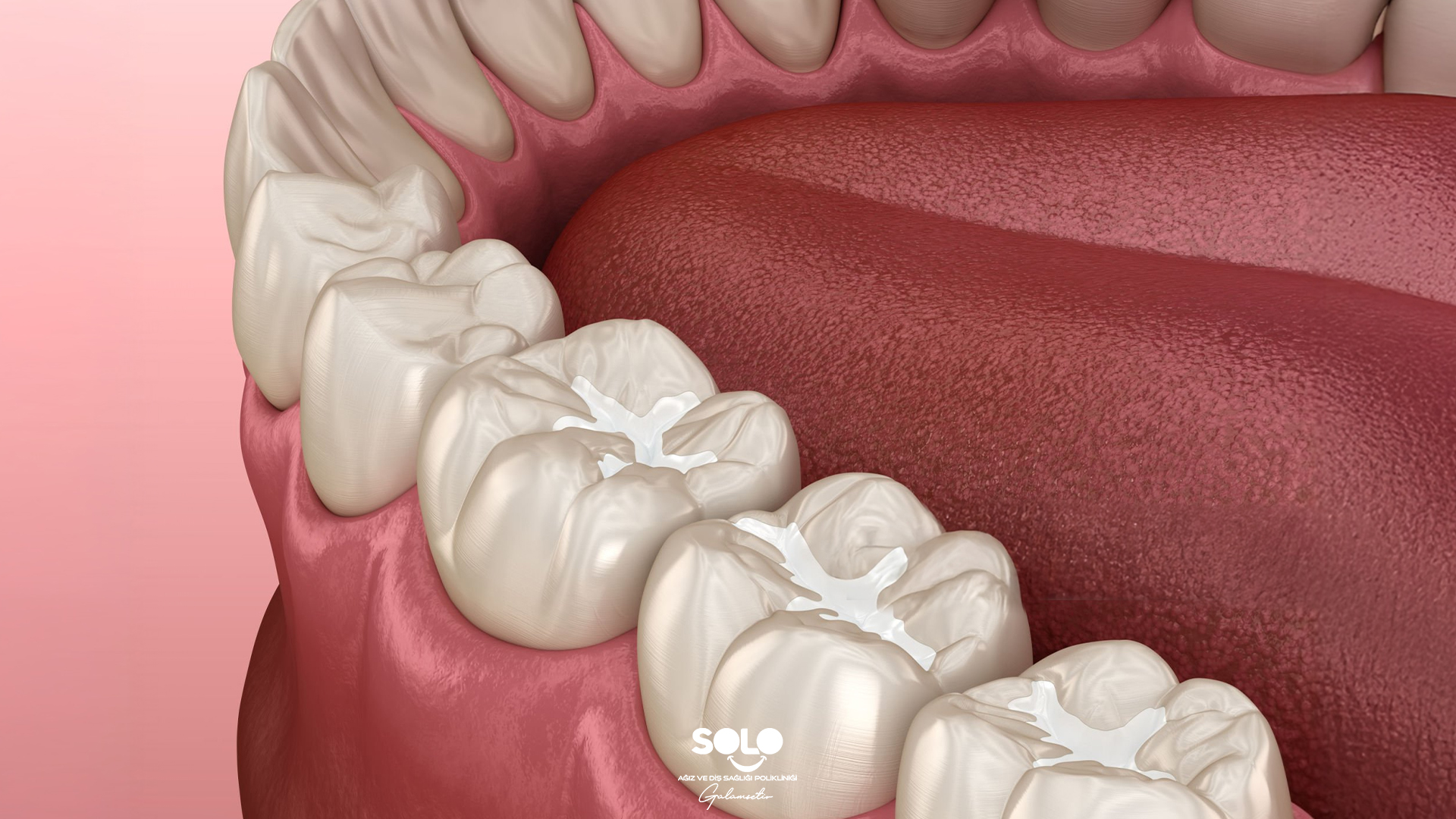What is Fissure Sealant?
When we think of dental health, most of us immediately think of brushing, flossing, and regular dental checkups. Indeed, these habits form the foundation of a healthy mouth and strong teeth. However, despite all this meticulous care, tooth decay can sometimes occur, especially in children. The primary cause is the failure to thoroughly clean the small grooves and grooves (fissures) found on the chewing surfaces of teeth. Food debris and bacteria accumulate in these areas over time, paving the way for cavities.
Fissure sealants are applied in a thin layer to the surface of the teeth, sealing these deep grooves and preventing bacteria from settling in these areas. This significantly reduces the risk of cavities. This practice is particularly effective in maintaining healthy teeth in children whose permanent molars are just emerging.
Many parents wonder what it is, how it’s done, or if it’s even necessary. However, this simple and painless procedure can prevent major dental problems down the road.
What is Fissure Sealant?
It’s a special protective material that covers the small grooves, indentations, and crack-like spaces found on the chewing surfaces of teeth. This fluid, usually clear or white, is applied to the surface of the tooth, creating a virtually invisible shield. It’s one of the most effective methods for protecting newly erupted permanent molars from cavities, especially in children and teenagers.
The chewing surfaces of our teeth, especially molars, have an uneven texture, often with small valleys and hills. These grooves are called “fissures.” No matter how meticulous your daily brushing, brush bristles may not always reach these deep, narrow spaces. This allows food particles and bacteria to settle in these areas over time, paving the way for cavities.
This substance, applied in a thin layer to the tooth surface, fills in fissures and smooths the surface. This makes brushing much more effective, and food particles and bacteria find no place to cling. Consequently, the risk of cavities is significantly reduced.

The procedure is both easy and painless. Because it requires neither anesthesia nor any drilling, our patients experience no pain or discomfort. After cleaning and drying the tooth with a special solution, we carefully apply the fissure sealant and cure it with a special light. The entire process takes only a few minutes. It’s not scary for children; on the contrary, it’s a very comfortable experience.
Another advantage is that it doesn’t damage the tooth and can be replaced if necessary. In other words, this procedure simply provides protection without requiring permanent intervention. It’s extremely beneficial to have fissure sealants applied before decay develops, especially for the first molars that emerge around age 6.
Why is Fissure Sealant Used?
The primary goal of this treatment is to protect teeth from decay. Providing this protection is crucial, especially in children, when permanent molars first appear in the mouth. This is because the enamel of newly emerging teeth takes some time to fully mature. During this period, the tooth is more sensitive and vulnerable to acids and bacteria. Fissure sealants protect the tooth like a shield during this sensitive period, protecting it from external factors.
Imagine your child’s newly erupted teeth, pristine and shiny. But this fresh tooth surface is also a very attractive place for bacteria. The deep grooves on the chewing surfaces of molars, in particular, are perfect hiding places for food debris and bacteria. A toothbrush may not always be able to reach these small spaces. This is where fissure sealants come in—they fill these tiny grooves, eliminating the potential for bacteria to colonize.

The benefits of this procedure aren’t limited to preventing cavities. Fissure sealants make the tooth surface smoother, making brushing much more effective. Children can clean their teeth more easily, increasing their motivation to care for their teeth. This means it’s not only protective, but also a significant support for establishing good brushing habits.
It also offers another significant long-term advantage: Because fissure sealants reduce the risk of decay in teeth, they avoid the need for more complex procedures like fillings or root canals. The tooth retains its natural appearance and strength for years to come.
Who Should Use It?
When fissure sealants are mentioned, children often come to mind—and that’s not wrong. Childhood and adolescence are the most common periods for tooth decay. Because newly emerging teeth are not yet fully mature, they are more susceptible to bacteria. Fissure sealants are particularly beneficial when the first molars, also known as the “six-year-old teeth,” and the second molars, also known as the “twelve-year-old teeth,” make their way into the mouth.
The preventative treatment applied during this period protects the child’s teeth from decay for many years. Furthermore, because the procedure is completely painless and short, it’s also quite comfortable for children. This is a good starting point for getting a child accustomed to the dentist and approaching dental care with confidence.
But fissure sealants aren’t just for children. Some adults’ teeth may be born with deep fissures—that is, the grooves on the surface of their teeth are more pronounced than normal. In this case, the risk of bacteria settling in these areas is high, regardless of how regularly you brush. Fissure sealants provide excellent protection for these individuals.
Fissure sealants are a practical yet effective way to protect their dental health, especially for those with teeth prone to decay, weak enamel, or those who have had to have frequent fillings in the past.

How is Fissure Sealant Applied?
It’s actually a fairly simple, painless, and quick procedure. Most children and even adults go through this process without even realizing it. First, the dentist thoroughly cleans the surface of the tooth with a special brush and toothpaste. This step is crucial for completely removing any food particles or plaque that may be lingering on the tooth. Then, a very mild acid solution is applied to the surface of the tooth; this doesn’t harm the tooth in any way; it simply roughens the surface slightly to allow the sealant to adhere better.
Once the tooth is prepared, the flowable fissure sealant is carefully applied to the chewing surface of the tooth, allowing it to spread into the deep grooves. A special blue light then hardens the sealant, ensuring it adheres firmly to the tooth surface. In the final step, the dentist inspects the application, trims any excess sealant, and ensures the tooth is smooth enough to avoid discomfort during chewing. The process is completed within a few minutes, providing long-lasting protection against decay.
Are Fissure Sealants Harmful?
Fissure sealants have been safely used in dentistry for many years.
When applied properly, they pose no harm to the tooth or the body. On the contrary, they protect the tooth from decay, helping it remain healthy.
Some parents may wonder, “Will sealing the tooth leave the decay inside?”, but this procedure is only applied to healthy teeth. If there is decay in the tooth, it is treated first, and the fissure sealant is applied afterward.

